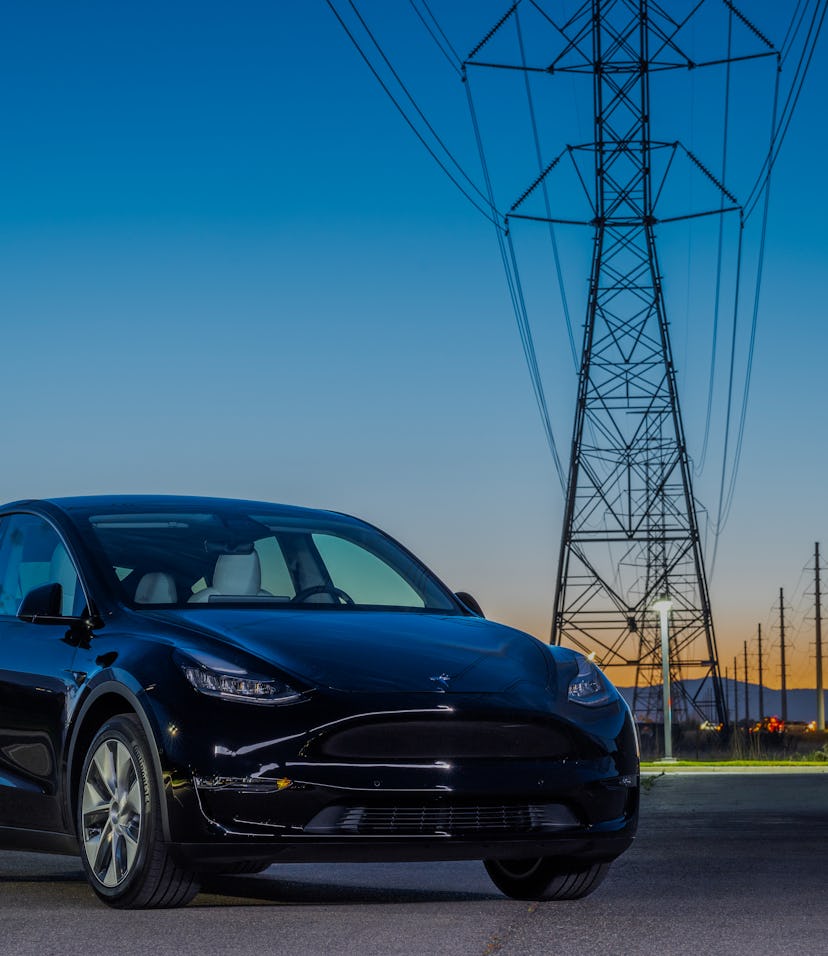Tech
Tesla's proposed ride-hailing network could ruin Uber and Lyft
CEO Elon Musk has long said he wants Tesla to launch its own ride-hailing app that could one day be driverless and generate income for vehicle owners.

Tesla CEO Elon Musk has spoken many times about launching Tesla Network, a ride-hailing app for Tesla owners that could, in conjunction with the company's Autopilot self-driving, eventually serve as a fully autonomous ride-hailing network to rival the likes of Uber and Lyft. The idea is that Tesla owners could make money from their cars when they're not using them.
Of course, Musk has also been promising fully autonomous Teslas for years. So much so that German regulators recently ruled the company can't advertise its Autopilot feature — which enables some hands-free highway driving — as autonomous driving.
Musk has since said that Tesla might launch the Network service before full autonomy, meaning owners would have to drive the cars themselves. A new note from Ark Research seen by Electrek estimates the service could launch at a price point significantly lower than Uber and Lyft. That's great news for consumers, but worrying for the existing ride-hailing sector, which is already struggling to find a path to profitability and sustainability.
Ark Research analyst Tasha Keeney believes that Tesla could launch its ride-hailing service with human drivers at a price of $4 per mile in New York City, or slightly more than what Uber already charges there. If it brought the average price down to $1 per mile in price-sensitive markets, Keeney believes the overall addressable market for Tesla's ride-hailing business would be $50 billion. It's important to note that Ark is bullish on Tesla and owns its stock.
Self-driving is the holy grail of ride-hailing – Musk has said that once Tesla's can completely drive themselves, the "robotaxis" would cost only $0.18 per mile to operate – so charging riders even $0.30 would be quite profitable. Self-driving cars are the holy grail for ride-hailing companies as they would remove the greatest expense: human drivers. Those are set to become even more expensive as key markets like California are pushing gig economy companies to recognize workers as employees and offer them actual benefits, like paid time off.
California's AB 5 measure that went into effect in January was meant to force ride-hailing companies to classify contractors as employees, but they remain locked in legal battles with the state to block the move. Ride-hailing companies argue that their drivers like the flexibility of being able to drive on their own schedules. Depending on how this and similar battles play out, the projections for ride-hailing businesses could look quite different. Of course, you don't have to worry about paying benefits if there's no driver.
Tesla's self-driving beta testers – Unlike Uber — which is privately developing its own autonomous vehicles — Tesla already uses its existing customers as guinea pigs to improve the Autopilot self-driving tech built into their cars. That has led to some controversy and a few fatal accidents. Three people have died since 2016 while driving in Tesla's with Autopilot enabled, mostly because they stopped paying attention to the road and the software failed to detect a problem before it was too late. Opening up Teslas to a proprietary ride-hailing network could help the autonomous software learn from more driving situations unique to ride-hailing pickups.
How many drivers of pricey Tesla's would actually want to work as ride-hailing drivers in the initial network remains to be seen. Even if they do decide to make some cash on the side, it would seemingly make more sense to use Uber and Lyft to receive requests as they already have huge networks of users. Tesla could theoretically incentivize drivers for improving the software by offering subsidized charging or other perks. Also, one should never underestimate the enthusiasm of Tesla fans. A Tesla-only network of on-demand vehicles could appeal to Teslaheads.
Full self-driving is still a dream – Once cars become fully autonomous it makes total sense to have your car pay for itself when you're not using it. Most cars spend 22 hours of the day parked and by sending them out to make money during those hours, many more people could afford to own one. This is all still theoretical, though, as full autonomy has proven much harder to pull off than optimists once believed. Flashy presentations and unrealistic timelines have given way to much more caution as very public accidents have shined a light on just how complex it is for software to navigate the complexities of actual streets and regulators approach the matter with uncharacteristic caution.